Space News
Brighter Side of News
17

Image Credit: Brighter Side of News
NASA researchers discover what happened to Mars’ water
- Mars, once rich with flowing water, is now a cold, dry desert, prompting researchers to uncover clues about its missing water using NASA's Hubble Space Telescope and the MAVEN mission.
- Researchers like John Clarke are focusing on the theory that Mars' water either froze into the ground or broke into hydrogen and oxygen atoms, with the lighter hydrogen escaping into space.
- By observing hydrogen atoms escaping Mars' atmosphere, researchers estimate the amount of water lost over time, unraveling the planet's transformation from a wet world to its current state.
- Mars' dynamic atmosphere experiences rapid temperature changes influenced by its distance from the Sun, impacting water loss processes over the planet's history.
- The collaboration between Hubble and MAVEN has provided insights into hydrogen escape rates on Mars, shedding light on the fate of the planet's water and ancient climate.
- Studying Mars' water history is crucial for understanding Earth-sized planets in habitable zones, offering insights into planetary evolution and the potential for life beyond our solar system.
- The MAVEN mission, launched in 2013, aims to study Mars' upper atmosphere to unravel its atmospheric loss, climate change, and the disappearance of liquid water on the planet.
- MAVEN's major findings include discoveries about atmospheric erosion during solar storms, processes leading to atmospheric sputtering, and insights into Martian winds and electric currents.
- Ongoing research by MAVEN continues to provide valuable data on Mars’ past, atmospheric processes, and the potential for human habitation on the planet.
- The study's collaboration with Hubble and MAVEN, along with ongoing research, contributes to a deeper understanding of Mars' water loss, atmospheric dynamics, and planetary evolution.
Read Full Article
1 Like
Livescience
404
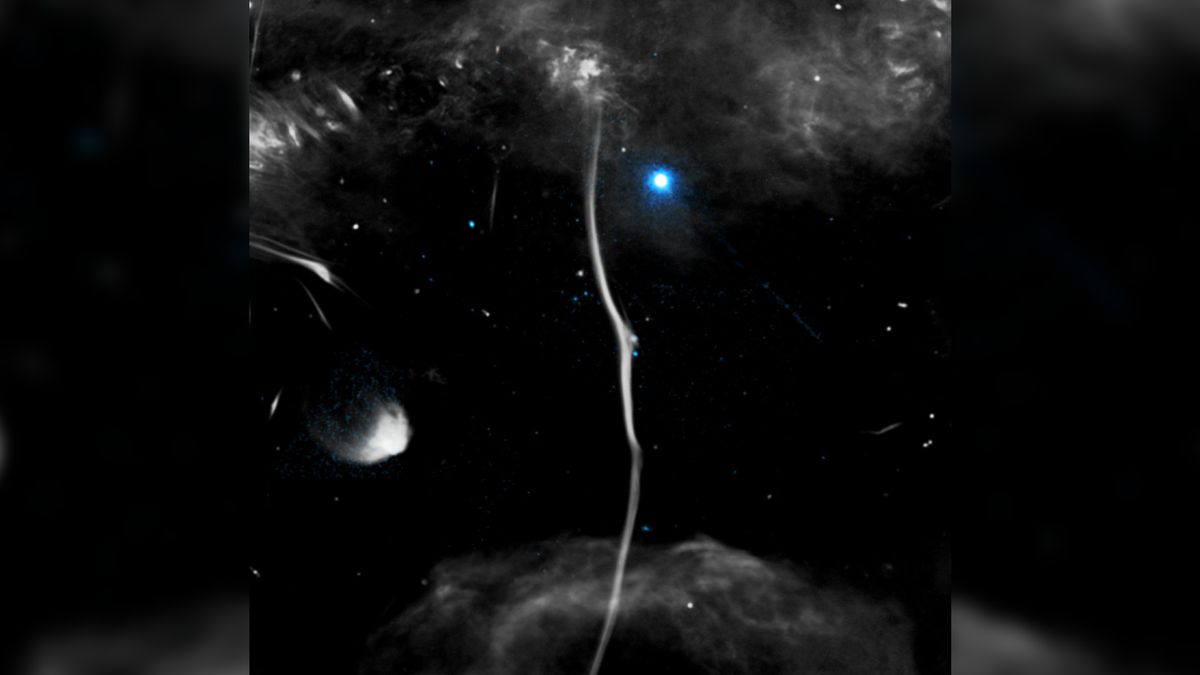
Image Credit: Livescience
NASA diagnoses fracture in a 'huge cosmic bone' using X-ray observatory
- NASA's Chandra X-ray Observatory detected a fracture in a cosmic 'bone' in the Milky Way using radio data from MeerKAT radio array and the National Science Foundation’s Very Large Array.
- The fracture is believed to have been caused by an impact from a pulsar, a rapidly spinning neutron star that emits radiation at regular intervals.
- The 'bone' is actually a galactic center filament called G359.13, located 26,000 light-years from Earth and about 230 light-years long.
- The fracture is speculated to have been caused by a high-speed collision with the pulsar, distorting the filament's magnetic field.
Read Full Article
24 Likes
Earthsky
43
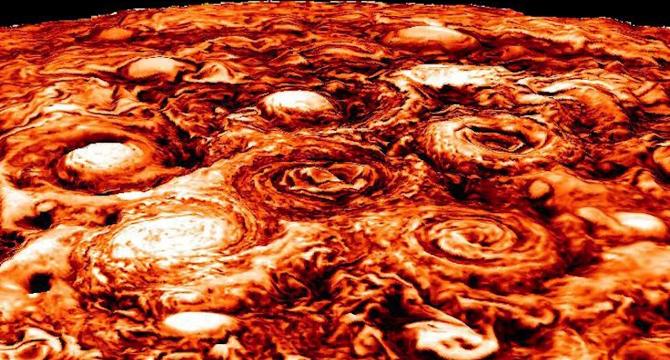
Image Credit: Earthsky
Jupiter and Io: New insights into stormy, volcanic worlds
- A new analysis of data from NASA's Juno spacecraft provided insights into the dynamics of Jupiter's atmosphere and Io's volcanic activity.
- Jupiter and Io stand out as two of the most active celestial bodies in our solar system, with Jupiter hosting massive cyclones and jet streams, while Io is known for its high volcanic activity.
- The Juno spacecraft discovered that the cyclones at Jupiter's north pole behave like hurricanes on Earth but on a much grander scale.
- Juno also revealed the presence of warm magma beneath Io's surface, below approximately 10% of its cooler crust.
- Scott Bolton, the principal investigator of Juno, described Jupiter as a planet of extremes, boasting enormous polar cyclones, powerful jet streams, and intense volcanic activities.
- Unlike Earth's storms, Jupiter's cyclones, especially those around its north pole, can last for extended periods due to the absence of land masses to disrupt their movement.
- NASA's Juno mission used radio waves to measure the temperatures in Jupiter's atmosphere via a technique called radio occultation, unveiling the planet's atmospheric dynamics.
- Io's surface, characterized by sulfur volcanoes and ongoing eruptions, hides warm magma beneath the cooled crust, aiding in the efficient transfer of heat to the moon's surface.
- Juno also witnessed the largest eruption on Io, highlighting the moon's active volcanic nature and the continuous discovery process of Juno's mission.
- Juno's ability to explore new regions and gather unique data about Jupiter and Io underscores its significance in expanding our understanding of these stormy and volcanic worlds.
Read Full Article
2 Likes
Discover more
Earthsky
387

Image Credit: Earthsky
Jupiter’s auroras caught on film. Watch here!
- The James Webb Space Telescope captured Jupiter's auroras, which are brighter and larger than Earth's, thanks to the planet's strong magnetic field and interactions with charged particles.
- Auroras on Jupiter are caused by interactions with charged particles from the sun and its moon, Io, along with its powerful magnetic field that accelerates particles to excite the atmosphere.
- Webb's sensitive observations revealed fast-varying auroral features on Jupiter, providing new insights into how the planet's upper atmosphere heats and cools.
- The team of scientists led by Jonathan Nichols observed unusual bright emissions in the auroras, prompting further investigation into discrepancies between Webb and Hubble Space Telescope data.
- The scientists intend to conduct more observations using Webb and compare the data with NASA's Juno spacecraft to understand the mysterious bright emissions on Jupiter.
- The study of Jupiter's auroras aims to deepen our understanding of the planet's atmosphere and space environment and explore the unique phenomena observed in the energetic auroras.
- These findings were published in the peer-reviewed journal Nature Communications and showcase the remarkable capabilities of Webb in capturing dynamic phenomena like Jupiter's auroras.
- The video captured by Webb offers a mesmerizing view of Jupiter's auroras flickering and popping at impressive speeds, shedding light on the dynamic nature of these cosmic light displays.
- The research on Jupiter's auroras highlights the scientific importance of studying such phenomena to unravel the mysteries of our solar system and the diverse interactions within it.
- Witnessing the auroras on Jupiter through the lens of Webb's Near-Infrared Camera provides a unique perspective on the captivating light shows occurring on our solar system's largest planet.
Read Full Article
23 Likes
Knowridge
366
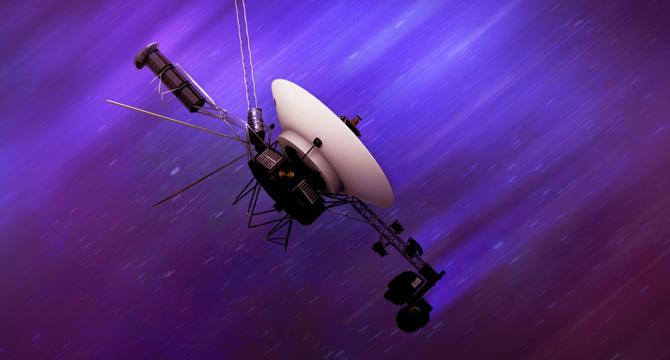
Image Credit: Knowridge
Voyager 1’s backup thrusters revived after 20 Years
- NASA engineers revived Voyager 1's backup thrusters after 20 years of inactivity.
- Revival crucial for extending the life of Voyager 1, launched in 1977 and currently journeying through interstellar space.
- Primary thrusters showed signs of clogging, prompting the team to bring dormant backup thrusters online before a critical Earth-based antenna upgrade.
- Success in making backup thrusters operational showcases NASA's engineering prowess and determination, enabling Voyager 1 to continue its mission 15 billion miles from Earth.
Read Full Article
22 Likes
Earthsky
241

Image Credit: Earthsky
Find the Keystone in Hercules, and the Hercules Cluster M13
- Hercules, a faint constellation, contains the easy-to-see Keystone asterism, which is a star pattern situated between the bright stars Vega in Lyra the Harp and Arcturus in Boötes the Herdsman.
- The Keystone asterism can be located by using the star Vega in Lyra the Harp or in conjunction with the star Arcturus in Boötes the Herdsman, about 1/3 of the way from Vega to Arcturus.
- Once the Keystone is found, it can be used to locate M13, also known as the Hercules cluster, a famous globular star cluster in Hercules which appears as a dim smudge or a fuzzy star through binoculars or a telescope.
- The best time to view the Keystone and the Hercules cluster is later in the evening when they swing high overhead after midnight and before dawn in the western sky.
Read Full Article
14 Likes
Earthsky
349
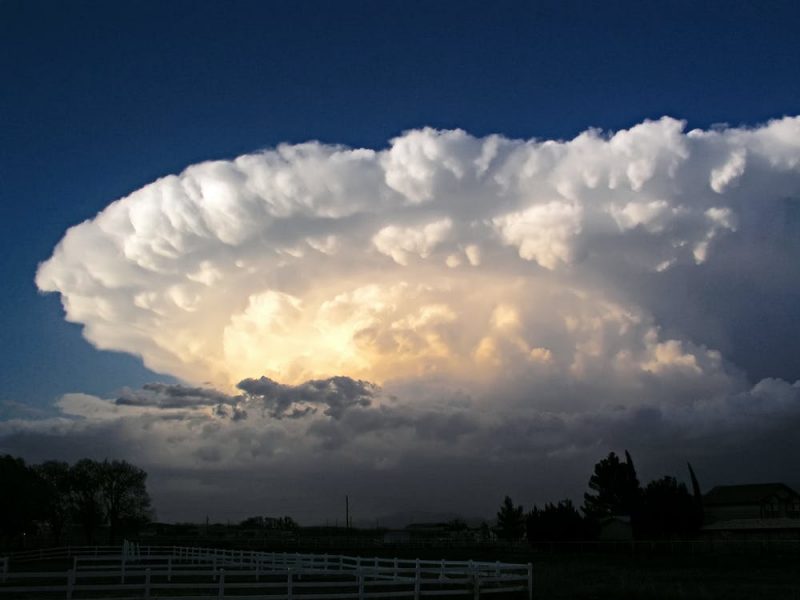
Image Credit: Earthsky
Severe storms, extreme heat and fire danger: Weather update
- Severe storms, extreme heat, and fire danger are expected in the U.S. with the formation of supercells due to the right weather conditions.
- Tornadoes, damaging wind, and large hail are possible in the northern Plains and Great Lakes, with triple digit heat forecast for the Gulf Coast.
- An Enhanced Risk is focused mainly around Wisconsin, with significant tornadoes, damaging wind, and large hail threats.
- Over 16 million people are in the Enhanced Risk area, including cities like Chicago, Milwaukee, and Grand Rapids.
- Thursday and Friday see continued severe weather risks, with very large hail, tornadoes, and intense wind gusts expected.
- Triple-digit heat is forecasted for south Texas, with record-breaking temperatures seen in San Antonio.
- Extreme heat advisories, watches, and warnings are issued to warn about the dangers of heat-related illnesses, particularly for vulnerable populations.
- An Elevated Fire Danger risk is possible for southern New Mexico, with dry conditions and gusty winds increasing fire concerns.
- Spring in the U.S. is characterized by active weather patterns, with a need for people to stay weather aware during severe conditions.
Read Full Article
21 Likes
Medium
2.3k

Image Credit: Medium
How I Boosted My Income with an AI Bot System
- Utilizing a smart AI bot system has boosted my income and transformed my financial approach.
- The Revolutionary 100% Done-for-You AI Bot System offers a hands-free way to earn money, proving highly effective in generating profits.
- Setting up the AI Bot System was simple yet yielded impressive results, with earnings exceeding expectations within days.
- This AI-driven approach has not only increased my income but also provided financial opportunities for others, showcasing its potential for success.
Read Full Article
13 Likes
Digitaltrends
68

Image Credit: Digitaltrends
SpaceX chief reveals target date for 9th Starship test
- Elon Musk hinted that the ninth test flight of SpaceX's Starship rocket is scheduled for next week, following a static test fire of the spacecraft's Raptor engines.
- SpaceX aims to ensure the successful performance of the Starship after losing spacecraft in flights seven and eight earlier this year.
- Long-term plan involves using Starship to take the first human crew to Mars, with Musk aiming to launch an uncrewed mission to Mars next year to test reliability.
- SpaceX anticipated to increase Starship testing to up to two flights a month by the end of this year, with plans for a crewed Mars flight by the end of the decade.
Read Full Article
4 Likes
Nasa
340

Image Credit: Nasa
A Tough Drill at Witch Hazel Hill
- After exploring Witch Hazel Hill at Jezero crater rim on Mars, the Perseverance Science Team aimed to sample ancient rocks to understand volcanic- or impact-related processes.
- The team targeted a rock with spherules, hoping to gain insights into Mars’ ancient past, but encountered challenges due to the rock's hardness.
- Despite facing difficulties, Perseverance successfully drilled into the rock, obtained the desired spherules, but encountered an overfilled sample tube issue.
- To resolve the problem, a dump activity was executed to clear excess core length, ensuring the sample could be sealed for future analysis.
- Hard rocks on Mars have previously hindered sampling efforts, but with perseverance, the team overcame obstacles and obtained valuable findings.
- The mission involved meticulous drilling procedures and problem-solving, showcasing the team's dedication and adaptability in Mars exploration.
- Perseverance's mission to uncover Mars' mysteries continues, demonstrating the importance of persistence and innovation in space exploration.
- Despite challenges, the team's hard work paid off, underscoring the significance of resilient efforts in discovering new insights on Mars.
- The mission's success in overcoming drilling obstacles highlights the commitment to scientific discovery and advancing knowledge of Martian geology.
- Through perseverance and ingenuity, the team navigated complexities to reveal intriguing findings, emphasizing the spirit of exploration on Mars.
Read Full Article
20 Likes
Nasa
77
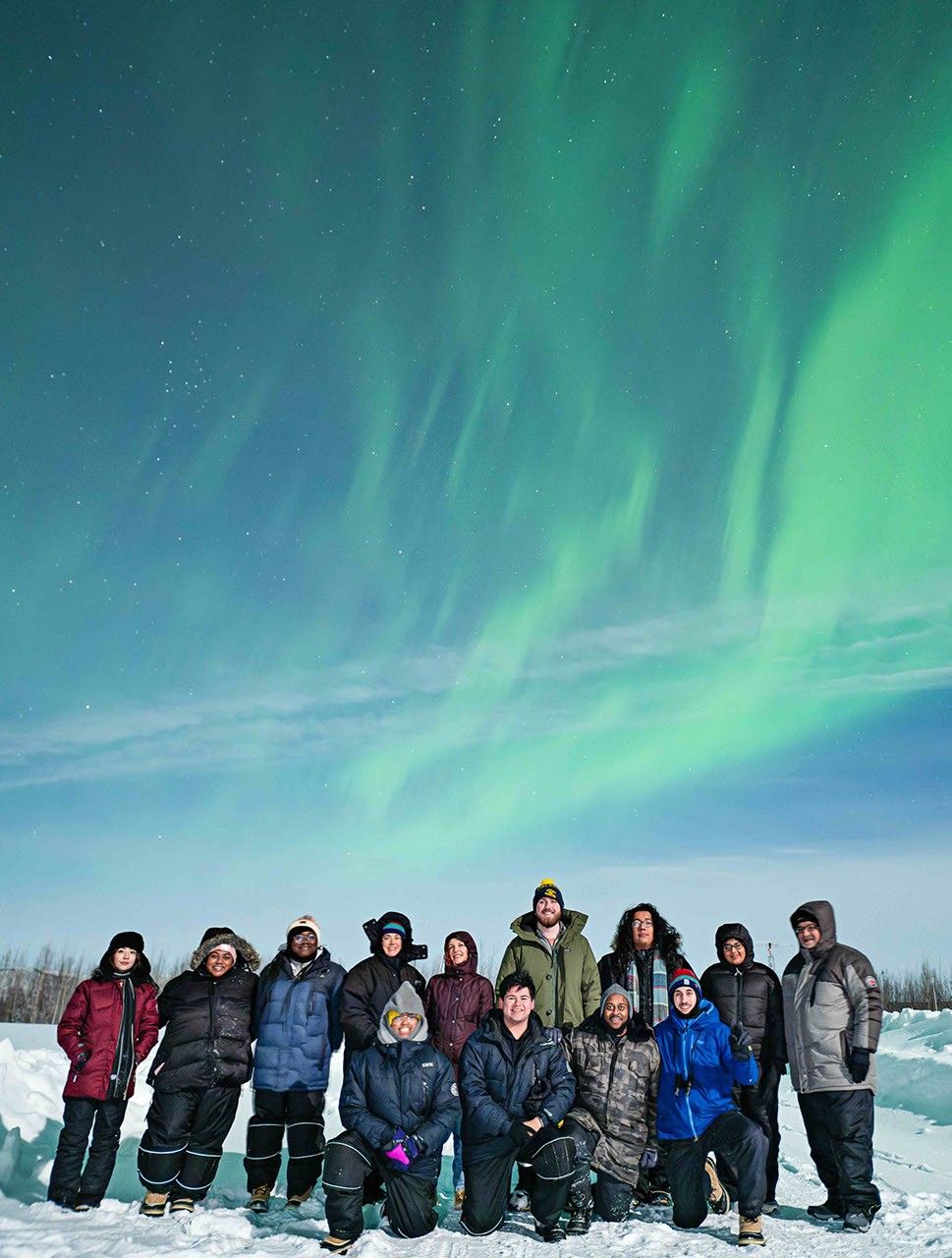
Image Credit: Nasa
Eclipses, Auroras, and the Spark of Becoming: NASA Inspires Future Scientists
- Nine undergraduate students from across the United States participated in the "Eclipses to Aurora" Winter Field School at the University of Alaska Fairbanks.
- Organized by the Astronomical Society of the Pacific and NASA's Aurorasaurus Citizen Science project, the program was a transformative experience into heliophysics and the Sun-Earth connections.
- Students engaged in seminars on solar and space physics, hands-on experiments, and learned from Athabaskan elders about the auroras and local star knowledge.
- Witnessing the aurora was not just a scientific milestone but a deeply personal and emotional experience for many students.
- The Winter Field School cultivated unity, awe, and a sense of interconnectedness within the students, fostering understanding and appreciation for science and culture.
- Participation in the program led to career shifts for some students, with paths such as pursuing heliophysics or medical physics.
- The Winter Field School went beyond academics to spark purpose, inspire new directions, and create enduring impacts on the students' futures.
- Eclipse Ambassadors program, supported by NASA, is a part of NASA's Science Activation Portfolio, aiming to promote deeper understanding of science through community engagement.
- The program connects NASA science experts, real content, and experiences with community leaders to engage in scientific activities that activate minds.
- To learn more about how Science Activation fosters learning and understanding of science, visit: https://science.nasa.gov/learn/about-science-activation/
Read Full Article
4 Likes
Nasa
25

Image Credit: Nasa
NASA Awards Launch Service Task Order for Aspera’s Galaxy Mission
- NASA has awarded Rocket Lab USA Inc. to launch the agency's Aspera mission, a SmallSat to study galaxy formation and evolution.
- Aspera will examine hot gas in the space between galaxies to study the inflow and outflow of gas from galaxies, contributing to star formation.
- The mission is part of NASA's Pioneers Program in the Astrophysics Division, managing the VADR contract through NASA's Launch Services Program at Kennedy Space Center.
- For more information on the Aspera mission and the Pioneers Program, visit: https://go.nasa.gov/42U1Wkn
Read Full Article
1 Like
Spaceflightnow
100

Axiom Mission 4 delayed due to Dragon capsule readiness
- The fifth Dragon spacecraft, tail number C213, will not be ready to support the flight of Axiom Mission 4 (Ax-4) to the International Space Station until next month, delaying the launch targeting from May 29 to at least June 8.
- The delays in readiness of the C213 Dragon spacecraft have impacted multiple missions over the years, with problems identified in propulsion, environmental control systems, and a battery that needed replacement.
- Axiom Mission 4 crew includes Commander Peggy Whitson, Pilot Shubhanshu Shukla, Mission Specialist Sławosz Uznański-Wiśniewski, and Mission Specialist Tibor Kapu, with the mission planned for a roughly two-week stay on the space station.
- NASA also announced plans for Crew-11 mission and SpaceX’s 33rd Commercial Resupply Services (CRS) mission to the ISS, with future commercial space stations aiming to continue crewed work in microgravity post the ISS retirement.
Read Full Article
5 Likes
Livescience
349
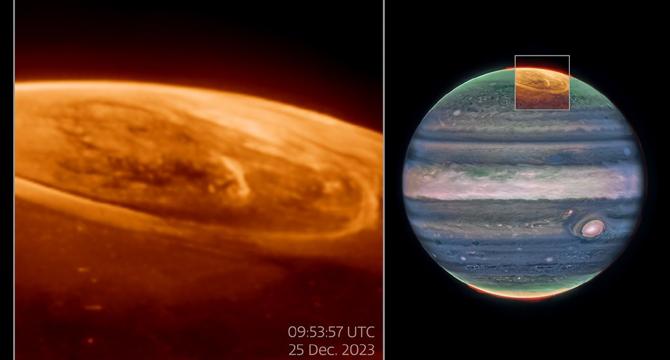
Image Credit: Livescience
James Webb telescope reveals 'impossible' auroras on Jupiter that have astronomers scratching their heads
- On Christmas Day in 2023, scientists used the James Webb Space Telescope to capture rapidly-changing features in Jupiter's auroras.
- The observations could help explain how Jupiter's atmosphere is heated and cooled, as reported in a study published in Nature Communications.
- The researchers focused on infrared light emitted by the trihydrogen cation, H3+, to understand its role in cooling Jupiter's atmosphere.
- Puzzling data was discovered when comparing JWST's infrared observations with Hubble's ultraviolet observations of Jupiter's auroras, leaving scientists with unanswered questions.
Read Full Article
21 Likes
For uninterrupted reading, download the app